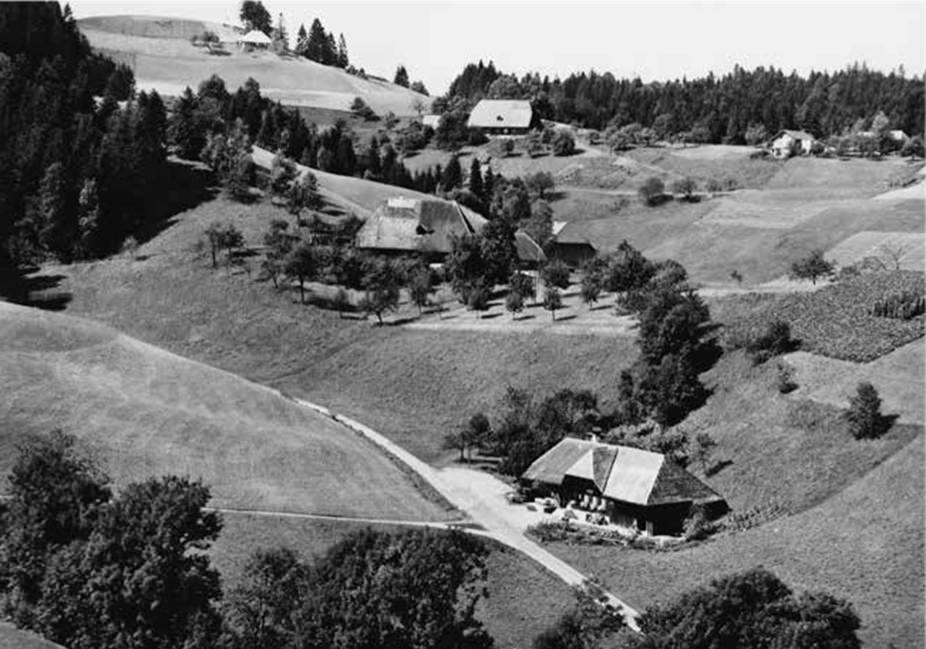The Roggengratbad was first mentioned in documents in 1783. Two years later, the bailiff of Trachselwald wrote in his official report on the baths: “In the Wyssbachgraben, in the jurisdiction of Eriswil, in what is known as the Roggengrathbad, people are said to bathe from time to time” (from “Die Heilbäder im Oberaargau und im Unteremmental” [The spas in Oberaargau and Unteremmental]).
Until 1869, the Roggengratbad had no economic rights whatsoever. In that year, a permit was granted rights for the winter months because of the many woodcutters working in the area. In 1879, it was approved for the whole year. In 1930, the owner at the time replaced the six old wooden bathtubs with three metal ones. The baths were recommended as a remedy for rheumatism, rheumatic paralysis and skin rashes. The last baths were heated in 1963.

Das Roggegratbad
Rösi and Walter Heiniger, known as “Bedli-Rösi and Bedli-Walter” were long-standing landlords over the past 100 years. On 20 August 1975 they sold the business to Peter Herrmann of Wyssbach. In the following years, the building was renovated and various tenants ran the well-known restaurant. On 16 November 2000 the Roggengratbad was almost destroyed by a fire in the chimney. Reconstruction and extensive renovation took place the following year. Afterwards, the restaurant continued to operate until 2017, when the last tenants – a married couple – were forced to close the business due to unpaid bills to suppliers and owners – just as in Gotthelf’s day. The restaurant never reopened after that. After the long-time owner had passed away, his wife finally decided to sell the property. In November 2023, the newly founded company BLUE-art Roggegratbad AG, a subsidiary of BAIN-BLEU S.A., which operates the thermal baths in Geneva and whose owners had previously developed and operated a chain of thermal baths and hammam facilities throughout Switzerland, acquired the property. In October 2024, after receiving the building permit, the total renovation began, meaning that this next chapter of the building’s history begins in the autumn of 2025.
